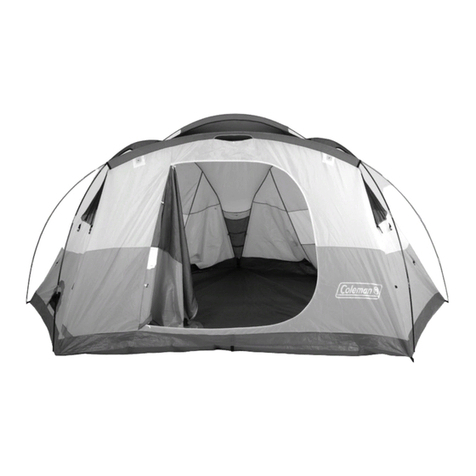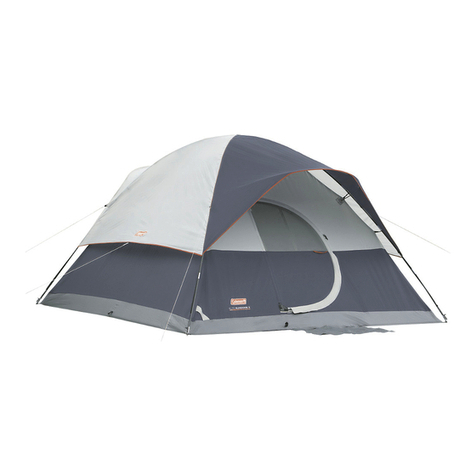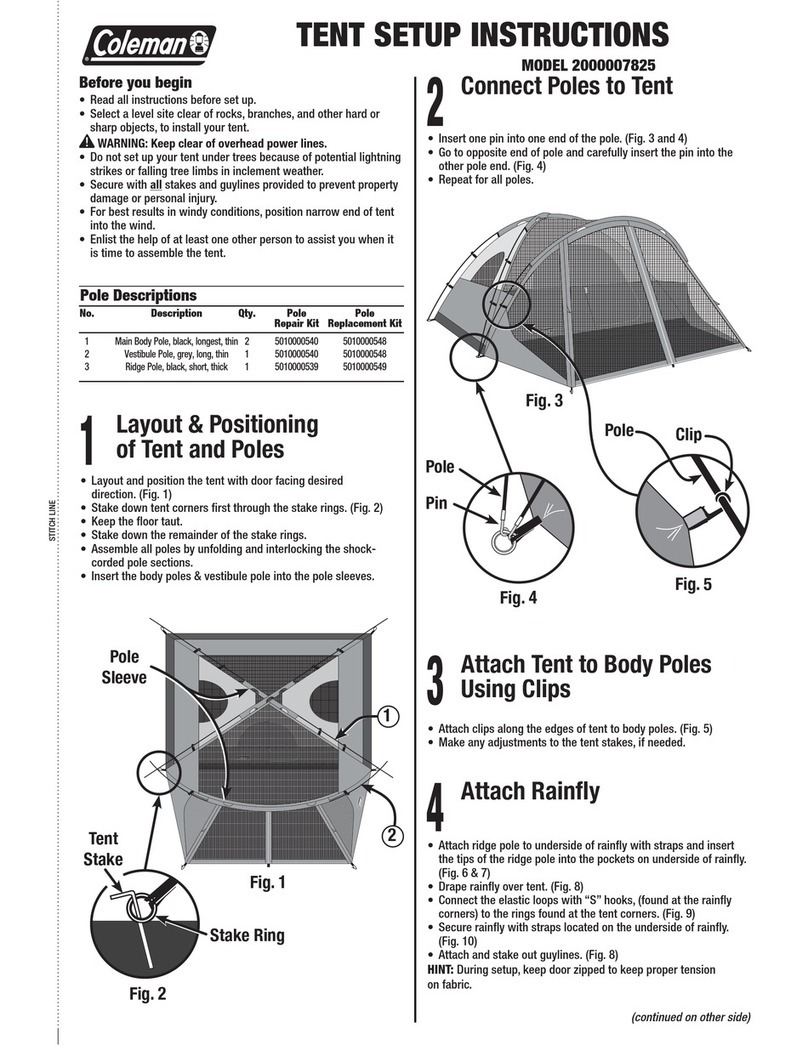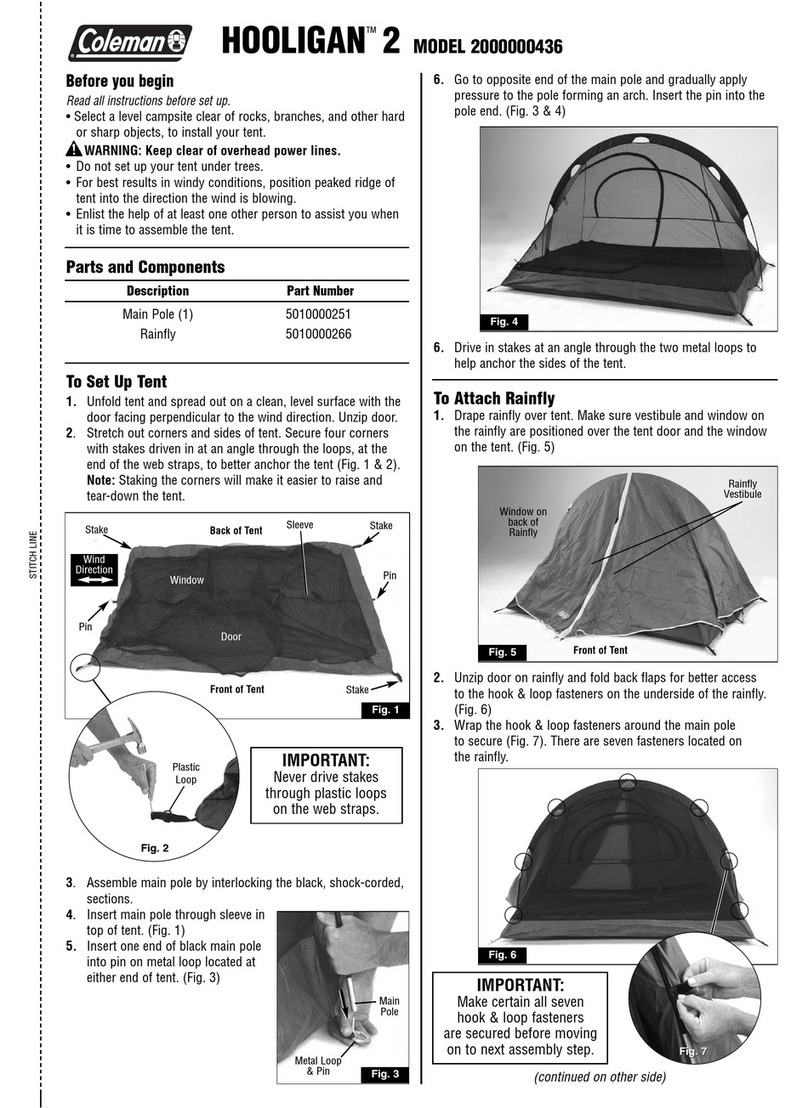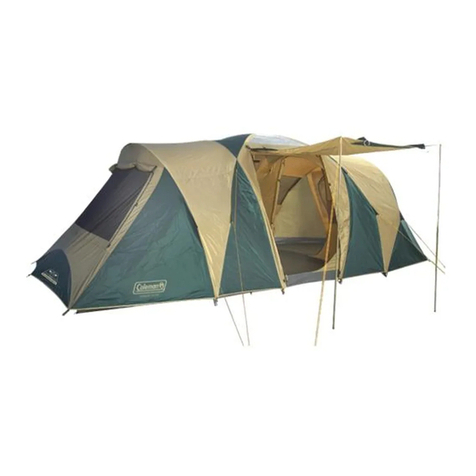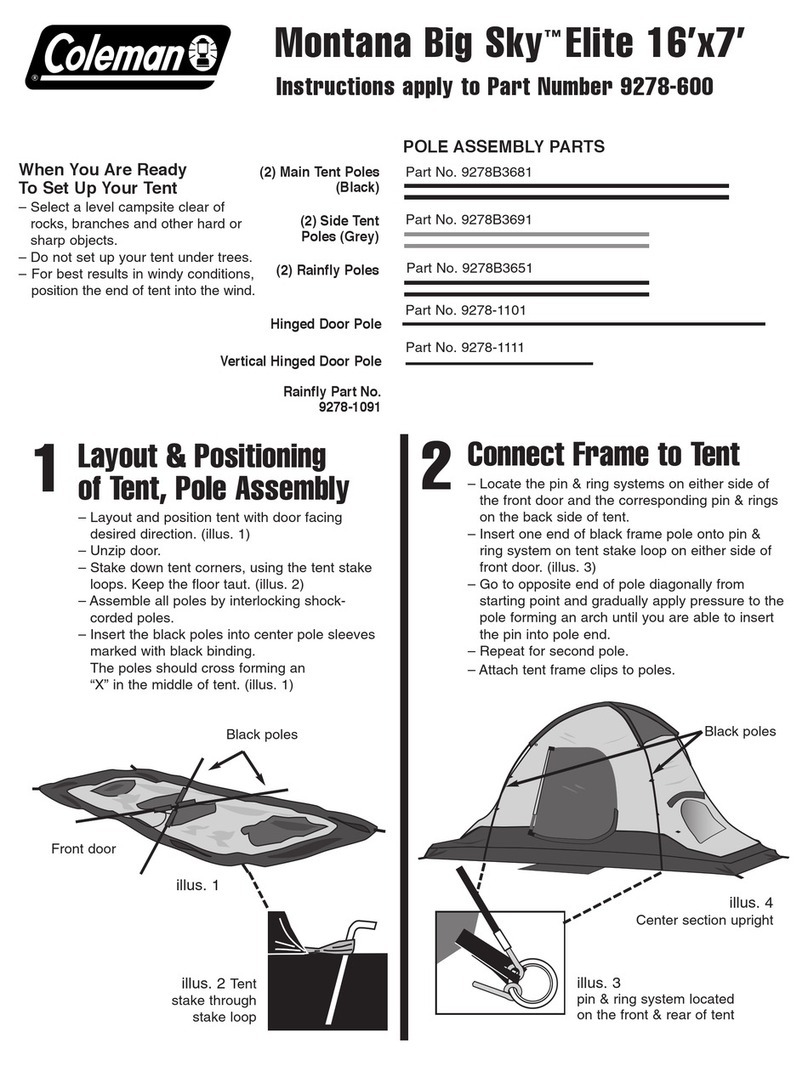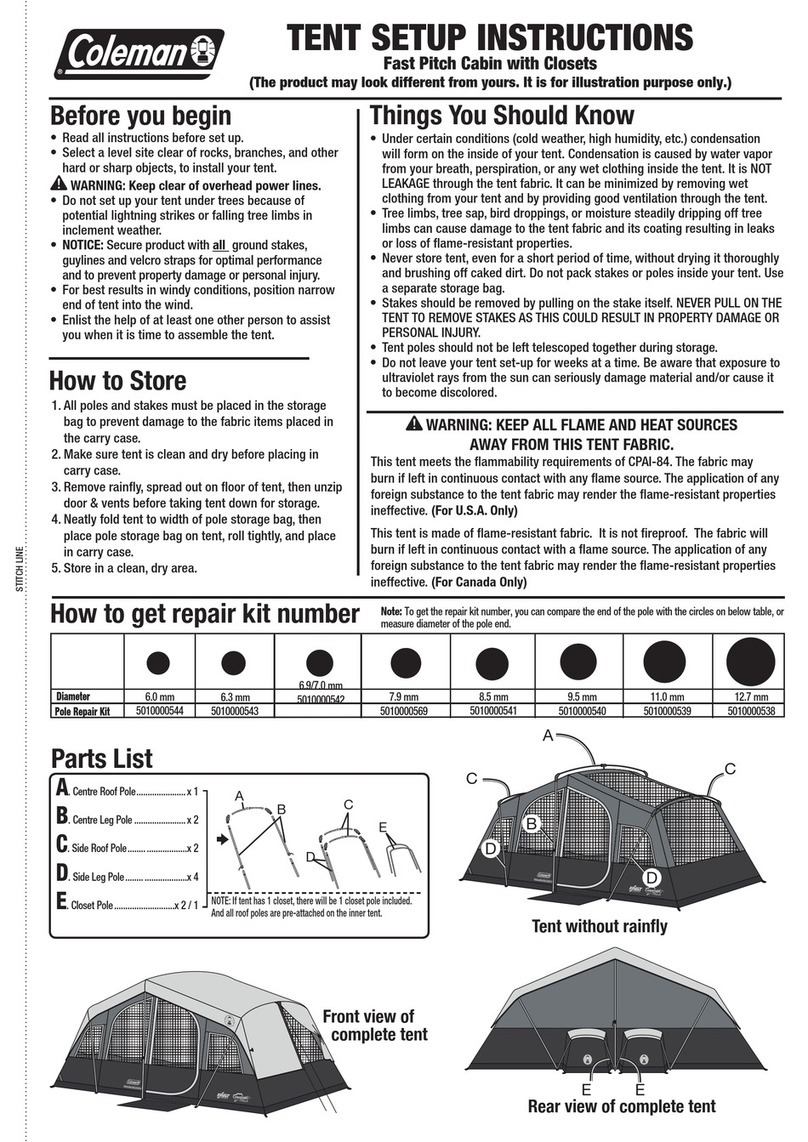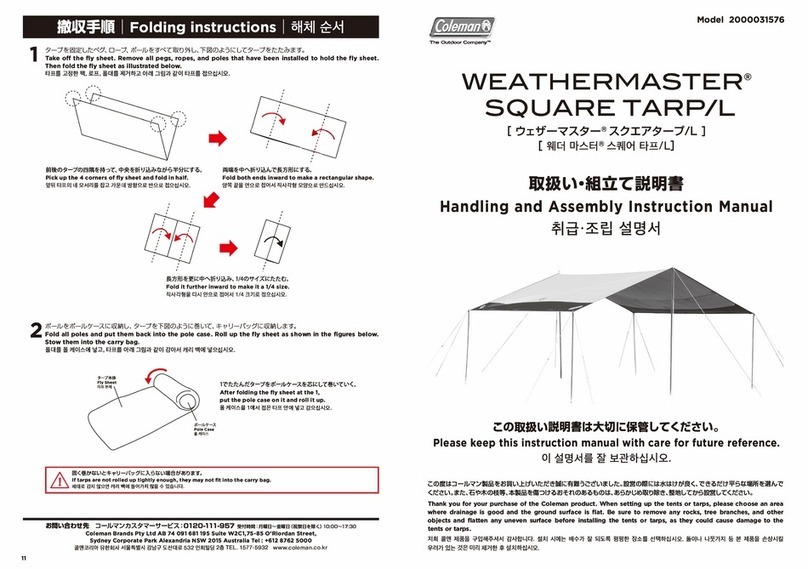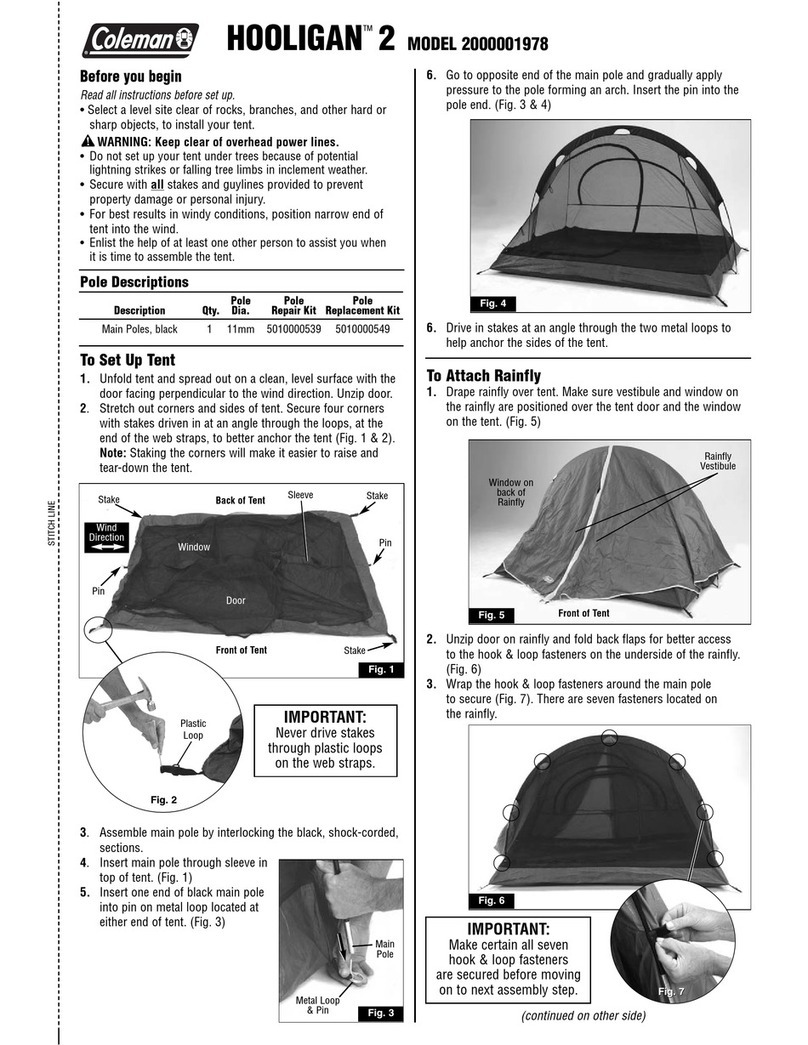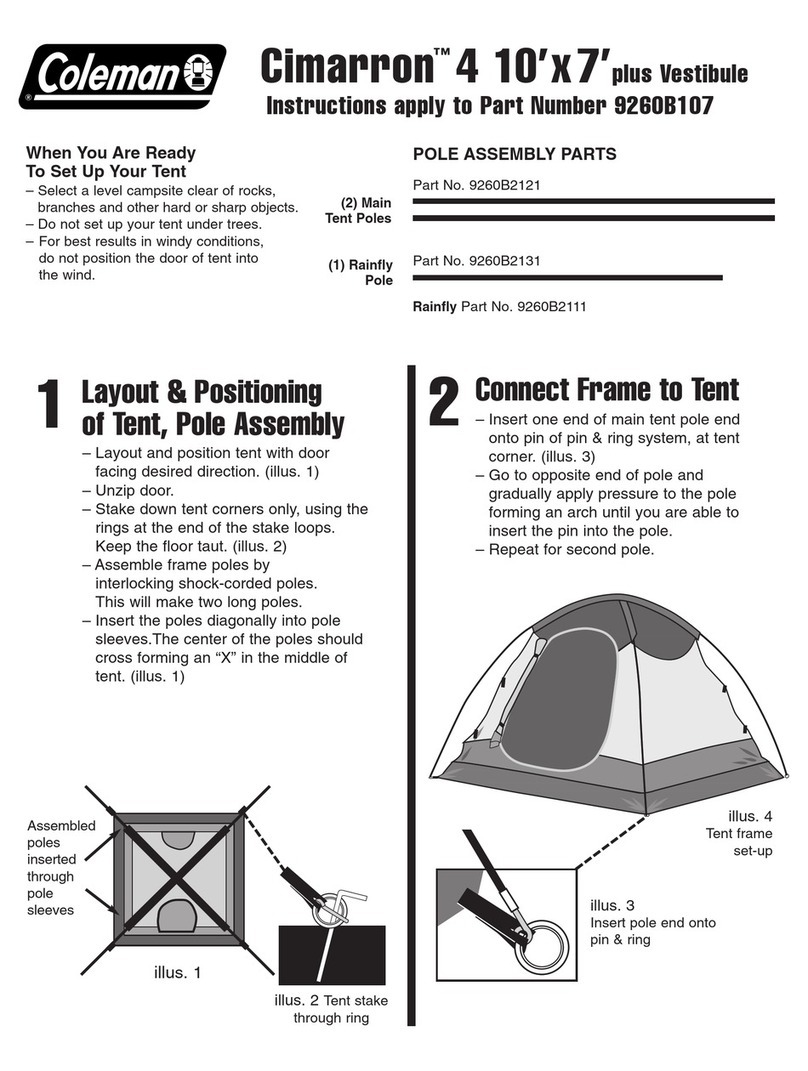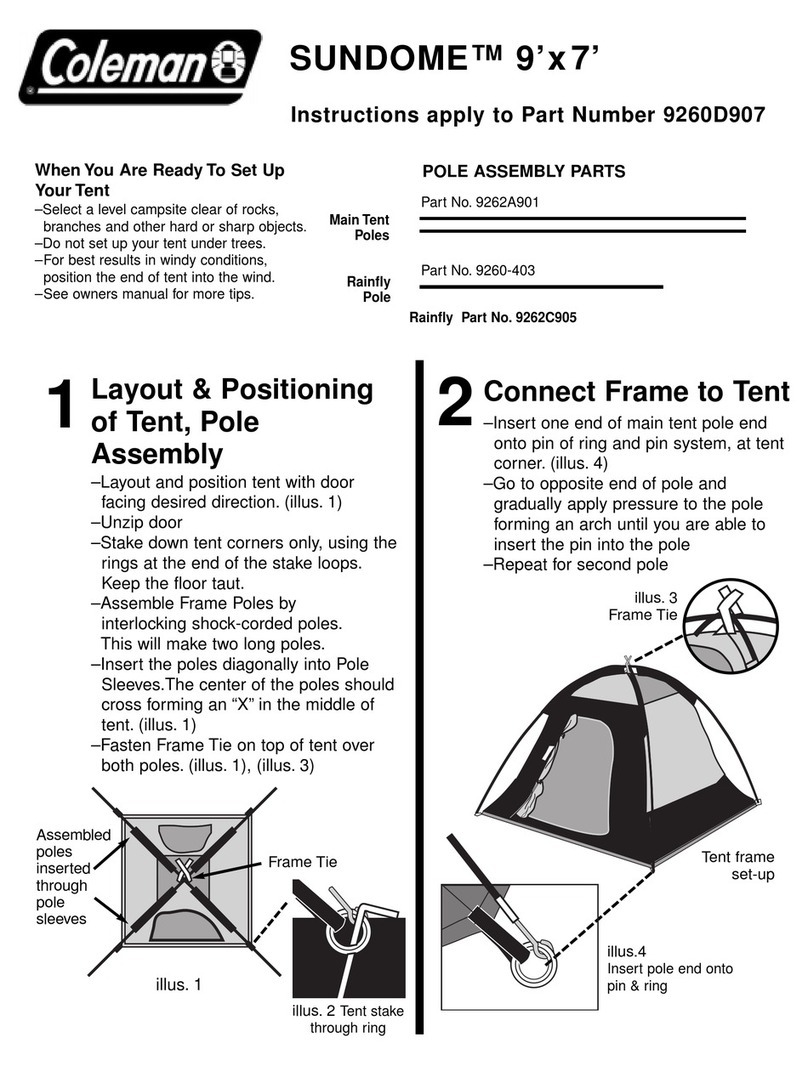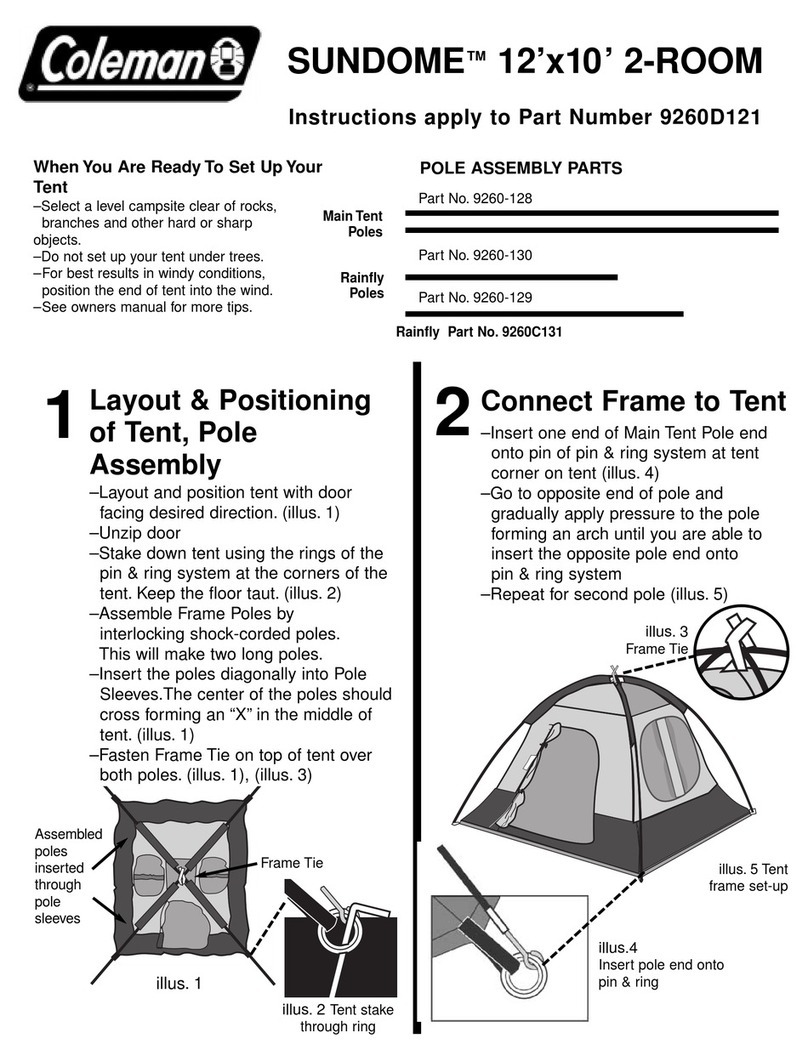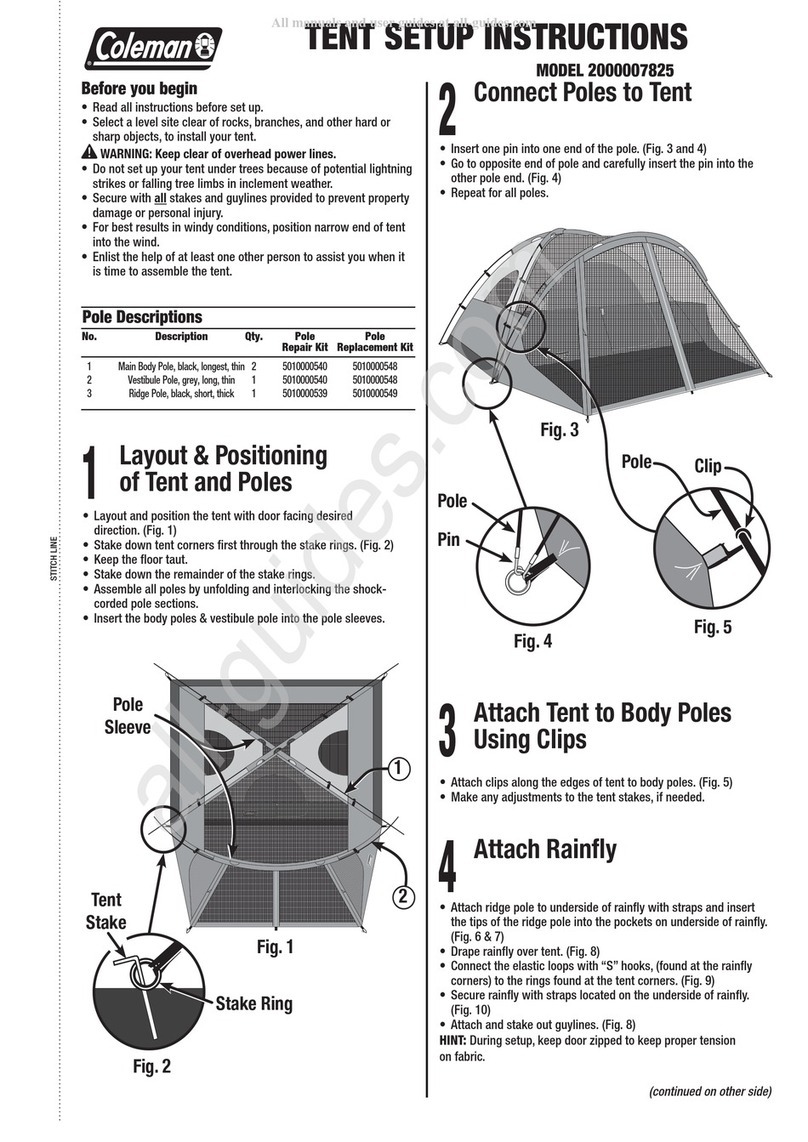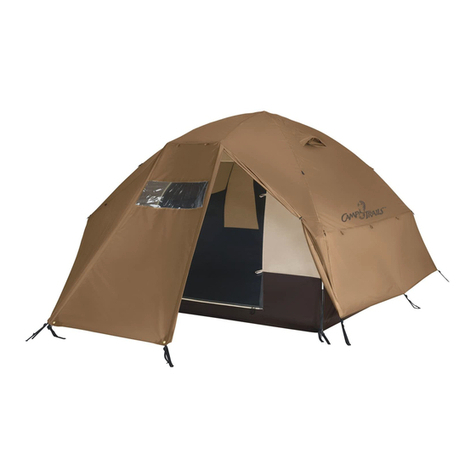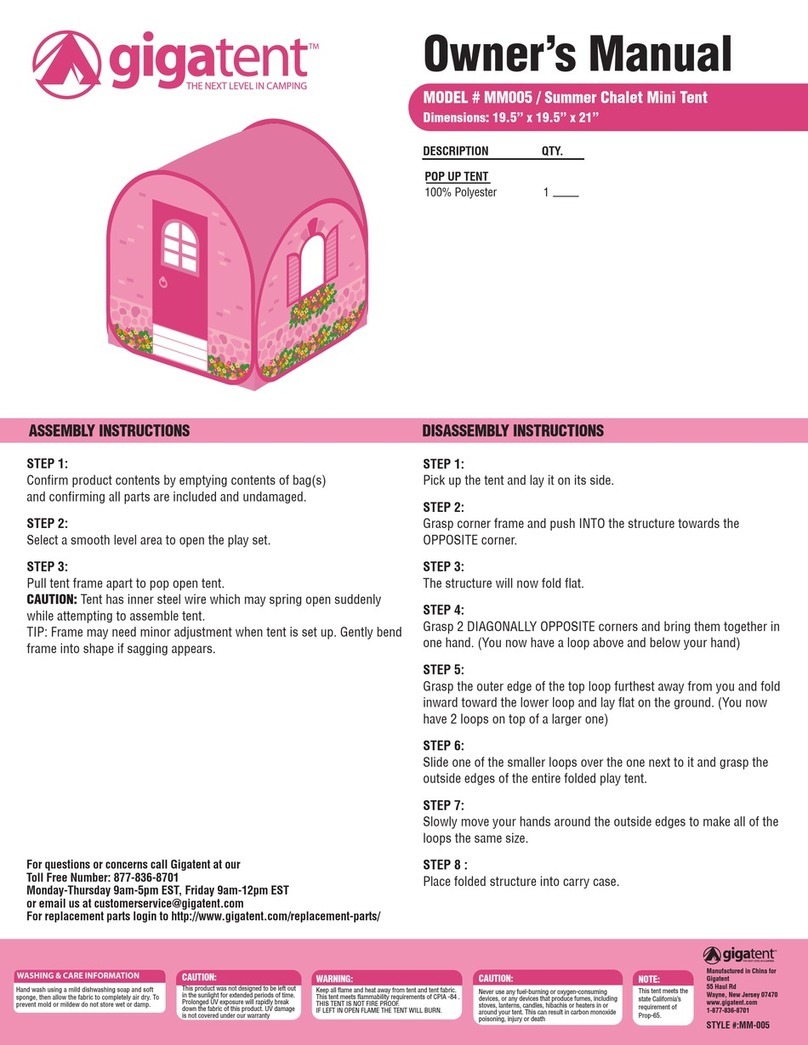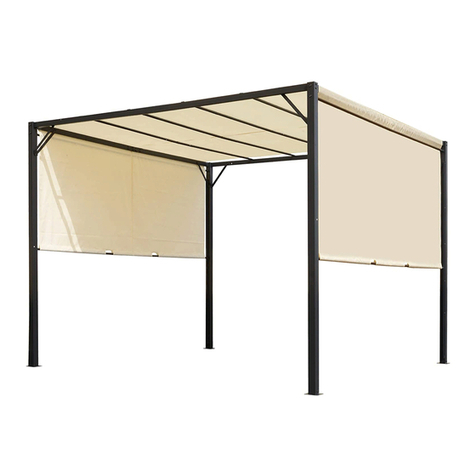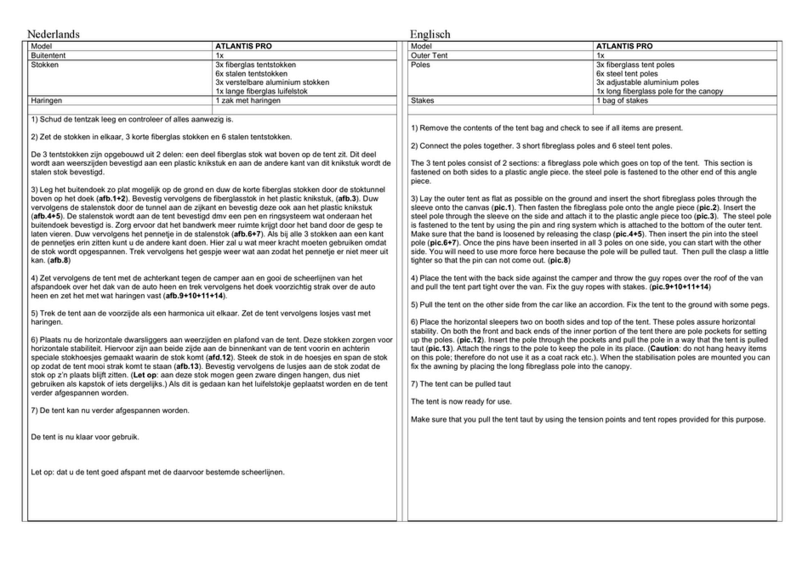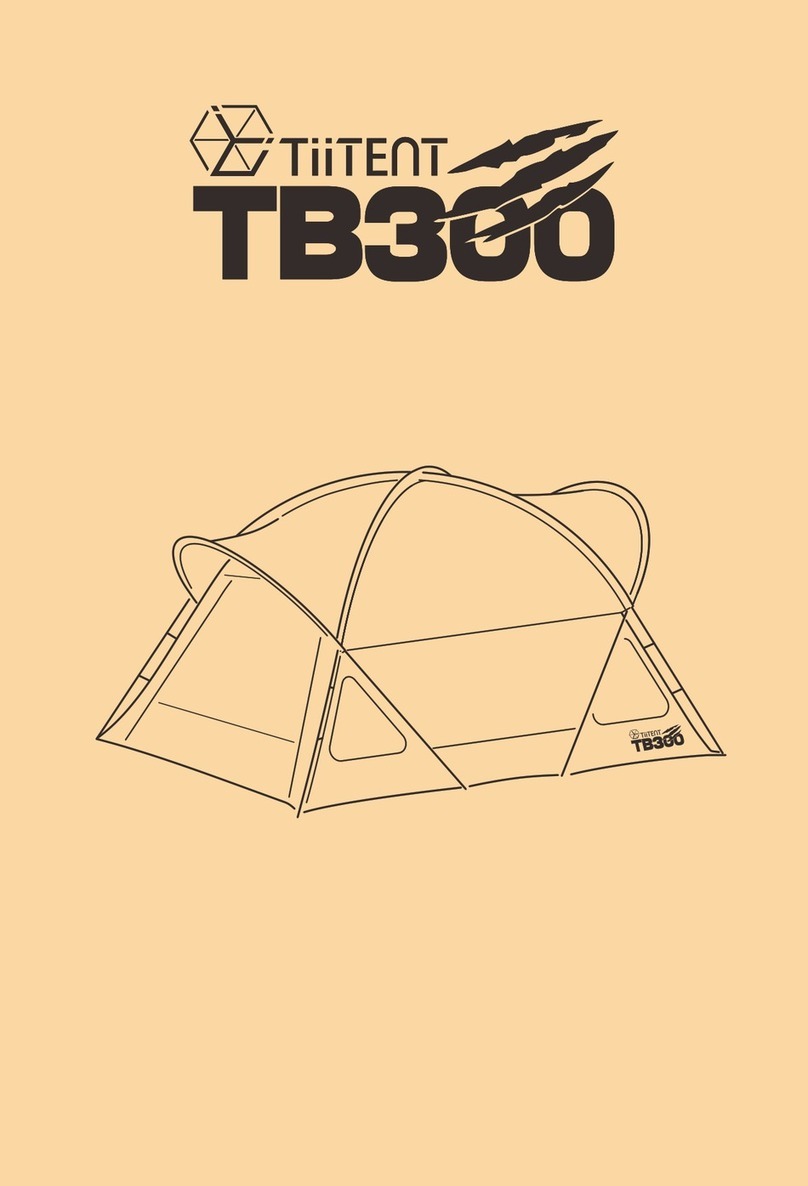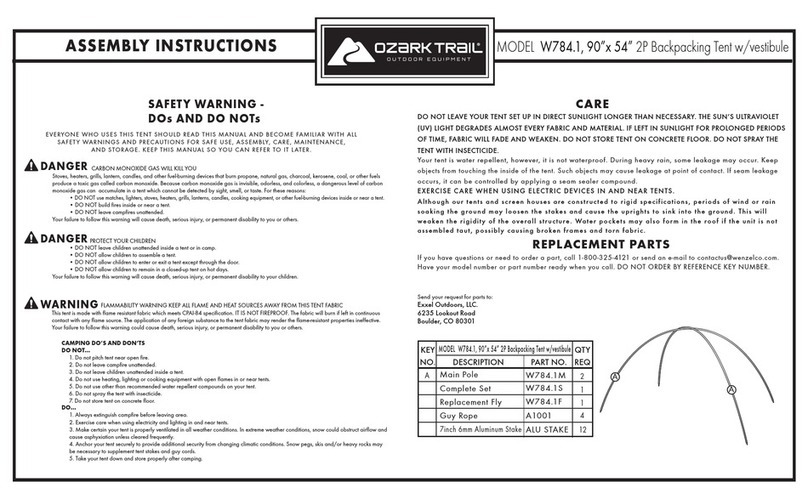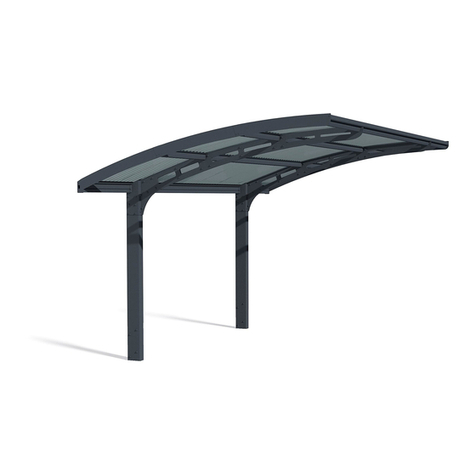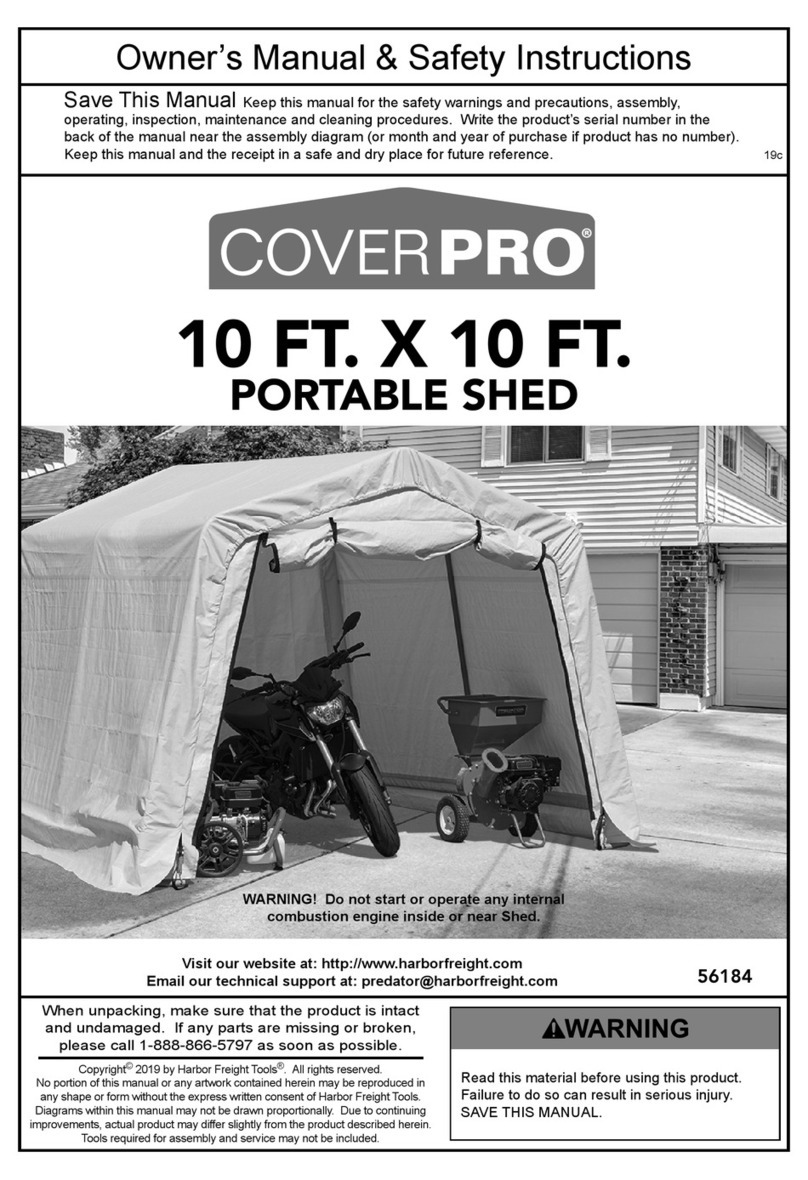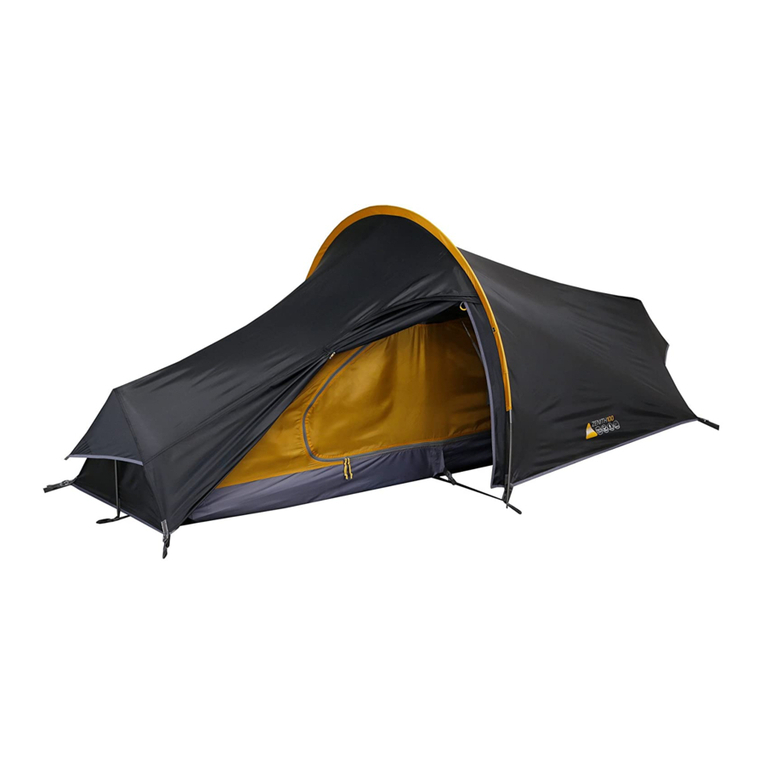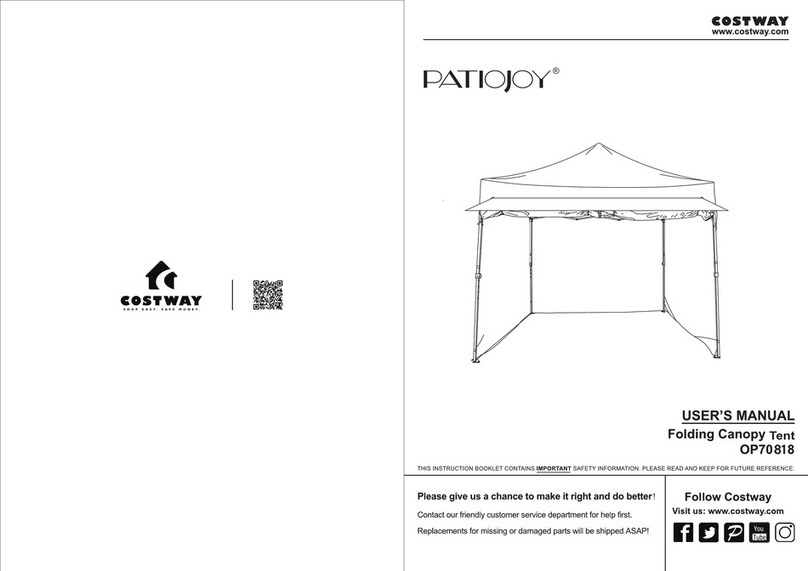
STITCH LINE
The Coleman Company, Inc. • 3600 N. Hydraulic • Wichita, Kansas 67219
1-800-835-3278 • www.coleman.com
MADE IN CHINA • PRINTED IN CHINA
© 2008 The Coleman Company, Inc.
Coleman®, , and are registered trademarks of
The Coleman Company, Inc.
4010004268 (20081028)
Things You Should Know:
• Under certain conditions (cold weather, high humidity, etc.) condensation
will form on the inside of your shelter. Condensation is caused by water
vapor from your breath, perspiration, or any wet clothing inside the shelter.
It is NOT LEAKAGE through the shelter fabric. It can be minimized by
removing wet clothing from your shelter and by providing good ventila-
tion through the shelter.
• Tree limbs, tree sap, bird droppings, or moisture steadily dripping off tree
limbs can cause damage to the shelter fabric and its coating resulting in
leaks or loss of flame-resistant properties.
• Never store shelter, even for a short period of time, without drying it
thoroughly and brushing off caked dirt. Do not pack stakes or poles inside
your shelter. Use a separate storage bag.
• Stakes should be removed by pulling on the stake itself. NEVER PULL
ON THE SHELTER TO REMOVE STAKES AS THIS COULD RESULT IN
PROPERTY DAMAGE OR PERSONAL INJURY.
• Shelter poles should not be left telescoped together during storage.
• Do not leave your shelter set-up for weeks at a time. Be aware that
exposure to ultraviolet rays from the sun can seriously damage material
and/or cause it to become discolored.
• This product is not intended to be used during heavy rain, wind, hail, snow
or other inclement weather. Excess water build-up can cause the frame
system to become unstable, and possibly collapse, causing injury.
• The shelter top and sun wall (if included) should be carefully removed dur-
ing windy conditions to avoid damage to product or personal injury.
• DO NOT use any gas or flame sources under or near this product.
WARNING: Keep all flame and heat sources away from
this tent fabric.
This tent meets the flammability requirements of CPAI-84. The fabric
may burn if left in continuous contact with any flame source. The
application of any foreign substance to the tent fabric may render the
flame-resistant properties ineffective.
Install the Screen House
NOTE: Raise frame posts to full height (top notch on post).
1. Unroll screen house and wrap around outside frame posts,
under the shelter post covers. Panels with zipper down
middle should center in front and back openings. (Fig. 22)
2. Fasten corner hooks on screen house over top bar of shelter
frame. (Fig. 15)
3. Fasten center hook on screen through loops on shelter and
then back through the loop on the screen located at center of
front and back panels. (Fig. 16)
4. Locate elastic straps with metal loop and hook along top of
the side screen panels, wrap around shelter frame; then insert
hoop into loop to secure. (Fig. 17)
To Store
1. All metal stakes must to be placed in the storage bag to
prevent damage to the fabric items placed in the carry case.
2. Make sure shelter top and screen house panels are clean and
dry before placing in carry case.
3. Store in a clean, dry area.
Fig. 17
Fig. 15
Fig. 21
Fig. 19
6. Insert metal hook on elastic straps into holes on post to
secure screen house. (Fig. 19)
7. Slightly unzip bottom corners of screen house to allow access
to metal frame post. Insert metal hook on elastic strap on post
cover into one of the remaining holes to secure. (Fig. 20)
8. Drive stakes through webbing loops at base of screen house
and post cover (Fig. 21). You can drive one stake through
both loops.
Fig. 16
9. Extend guylines to ground until taut; then stake through the
loops to secure. (Fig. 22 & 23)
10. To roll up panel(s), unzip at corners, roll, then secure with
cloth ties at top of panel. (Fig. 24)
11. To tie back center or back opening(s), unzip center panel and
use cloth straps along side of panels to secure. (Fig. 25)
DISASSEMBLY INSTRUCTIONS
Remove the Stakes
1. Carefully remove stakes that hold down the guylines and
screen house by pulling out hook ends. Remove excess soil
from stakes and put into storage bag.
2. Carefully remove nail stakes from metal base of legs and
store them in their bag.
Taking Down the Shelter
1. Remove screen house by disconnecting all corner straps and
elastic straps with metal hooks (if applicable).
2. Press the button located on lower portion of legs, and careful-
ly lower each leg one notch at a time, making sure all four
legs are level before proceeding to the next notch (Fig. 26).
Continue in this manner until frame
is completely lowered to the ground.
3. Remove shelter top from frame by
detaching nylon fasteners located
on shelter frame.
4. Slide shelter top off frame and fold
for storage.
5. Press the push buttons found at
each upper corner of the frame.
This will allow you to push the frame inward and competely
close it. Close shelter frame and store in carry bag provided.
Fig. 22
Fig. 25
Fig. 24
Fig. 23
Fig. 26
5. Secure shelter by driving nail stakes through
the holes located on the metal base of each
frame post. (Fig. 18)
Fig. 18
Fig. 20
Shelter
Post
Cover


